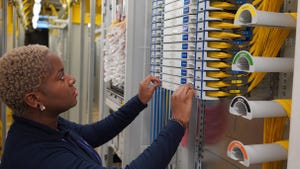DTE Energy Gets More Analytical
The Detroit-based energy provider installs Tollgrade sensors in an effort to predict and avoid outages on its power network.

DTE Energy is taking steps to give its electrical distribution network more intelligence with the addition of sensors and software designed to help predict outages.
The Detroit-based utility is deploying LightHouse sensors from Tollgrade Communications Inc. as well as the company's Predictive Grid Analytics software platform. The sensors are installed at substations to detect and report "line disturbance events" (such as trees brushing against power lines, for example) before they cause a failure, giving the company's field crews more opportunity to head off an outage.
"The sensors report faults or a short on the circuit, and we capture that data and track it to where the fault or short occurred," says Haukur Asgeirsson, manager of power system technologies for DTE Energy Company (NYSE: DTE). "If you don't have data like that, you have to drive the circuit and find where the failure occurred. So it's a time savings."
The initial batch of sensors installed will include cellular cards and report via the Verizon Wireless or AT&T Mobility LLC networks, Asgeirsson says. But the company is also planning to deploy sensors in portions of its territory where it has deployed a WiMax network from Tropos Networks Inc. as part of an advanced metering infrastructure (AMI) system.
The deployment is a good example of a utility using predictive analytics in an effort to both prevent outages and shorten them if they do occur -- similar to the way many telecom service providers are looking to analytics to help improve network performance and service delivery.
"We're tying the software into our operations systems," Asgeirsson says. "We're one of the few utilities that's actually doing that -- developing and enhancing our distribution and automation systems."
In addition to saving time in identifying and preventing outages, the sensors are also a less expensive fix than upgrading aging infrastructure in DTE's distribution system, Asgeirsson says.
"We quickly realized we can't retrofit our old substations -- that's a very costly endeavor," he says. "This is a fairly low-cost way to get data out of our legacy systems that we haven't been able to upgrade."
The grid modernization effort was recently recognized by the Clinton Global Initiative for a commitment by DTE and Tollgrade to reduce outages in DTE's territory by 500,000 minutes over the next three years. The companies plan to produce an industry report on how the technology can help prevent outages and speed power restoration.
"The lessons DTE learns will be shared -- the methodologies and benchmarks for how crews can use the data and that changes the business process," says Kim Getgen, vice president of corporate marketing for Tollgrade.
— Jason Meyers, Utility Communications Editor, Light Reading
About the Author(s)
You May Also Like












